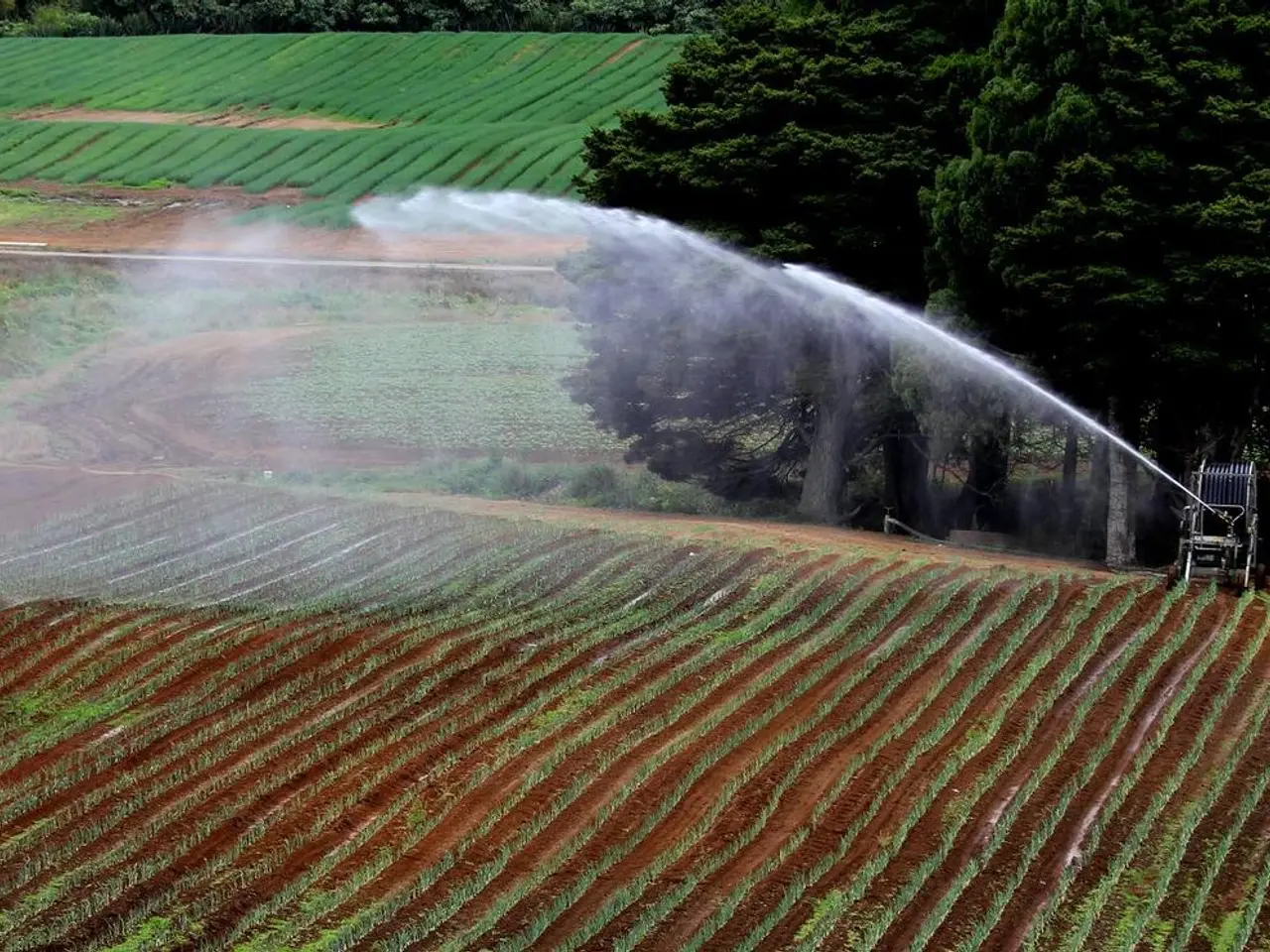Managing Heat Levels in Permanent Agricultural Gardens
Regulating Soil Temperature in Permaculture Gardens
In the world of permaculture, managing soil temperature is a crucial aspect for the success of a garden. Here are some key techniques that gardeners use to regulate soil temperature effectively.
Mulching and Layering Organic Matter
Mulching heavily with materials like wood chips, straw, or leaf litter helps regulate soil temperature by insulating the soil against heat and cold while retaining moisture. This practice also suppresses weeds, reduces erosion, and supports beneficial soil organisms.
Another method is sheet mulching (also known as lasagna gardening), which involves layering organic materials that decompose to improve soil fertility and act as a thermal buffer, helping keep soil cooler in summer and warmer in winter.
Strategic Plant Layering and Microclimate-Enhancing Structures
Incorporating compost enhances soil structure and moisture-holding capacity, indirectly stabilizing soil temperature by maintaining a healthy, well-aerated soil. Layered planting or polycultures, including canopy trees, understory shrubs, and ground covers, create shade and windbreaks that protect soil from extreme temperatures.
Structures such as cold frames, row covers, or hoop houses can extend growing seasons by moderating soil and air temperatures during colder months. Minimizing soil disturbance, such as avoiding tillage, preserves soil structure and the insulating benefits of organic layers on the surface.
Utilizing Microclimates for Temperature Control
Utilizing microclimates for temperature control is key in permaculture design. Places like south-facing slopes and areas near water or walls get warmer, while low-lying and shaded areas stay cooler. Thermal mass elements, like rocks, water features, or dense materials, help regulate soil temperature by storing and slowly releasing heat.
Monitoring Soil Temperature
Monitoring soil temperature is essential in permaculture gardens. Gardeners use soil thermometers, digital probes, and automated systems to track this data. Smart agtech, with its advanced tech and AI, can help in monitoring and managing the climate and plant health.
Other Factors Affecting Soil Temperature
Soil temperature impacts plant growth, nutrient availability, and microbial activity. Sandy soils warm up faster than clay or loamy ones, while peat soils are the coolest. Solar radiation, season, and atmospheric conditions all affect soil temperature. Understanding soil heat capacity and thermal conductivity is crucial for managing temperature in permaculture gardens.
Wet soils heat up and cool down slower than dry ones. Increasing soil organic matter from 1 to 3% can reduce erosion by 20 to 33%, due to increased water infiltration and stable soil aggregate formation. In winter, the main goal is to keep the soil from freezing, while in summer, gardeners must keep soil cool and moist.
Benefits of Regulating Soil Temperature
Regulating soil temperature leads to longer growing seasons, better plant health, and a thriving soil ecosystem. Proper temperature control can enhance nutrient uptake, weed management, and soil solarization success. Controlling soil temperature helps beneficial microorganisms in the soil thrive, and regulates root growth and nutrient absorption.
Conclusion
In summary, using thick organic mulches and sheet mulching combined with strategic plant layering and microclimate-enhancing structures are the best permaculture techniques for regulating soil temperature. These methods maintain moisture, protect soil biota, and reduce temperature extremes naturally and sustainably.
- In permaculture, managing soil temperature is crucial for garden success, with techniques including mulching and layering organic matter.
- By insulating the soil, mulching helps regulate temperature while also suppressing weeds, reducing erosion, and supporting beneficial soil organisms.
- Sheet mulching (or lasagna gardening) involves layering organic materials to improve soil fertility and act as a thermal buffer.
- Incorporating compost enhances soil structure and moisture-holding capacity, indirectly stabilizing soil temperature.
- Layered planting or polycultures create shade and windbreaks for soil temperature protection, while structures like cold frames and hoop houses extend growing seasons by moderating temperatures during colder months.
- Utilizing microclimates for temperature control is essential in permaculture design, using areas like south-facing slopes, areas near water or walls, or low-lying and shaded areas.
- Monitoring soil temperature is essential using soil thermometers, digital probes, or automated systems, and smart agtech can help manage climate and plant health.
- Regulating soil temperature leads to benefits such as longer growing seasons, better plant health, thriving soil ecosystems, enhanced nutrient uptake, improved weed management, and successful soil solarization.




